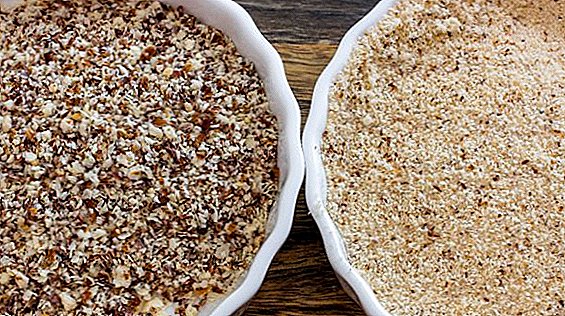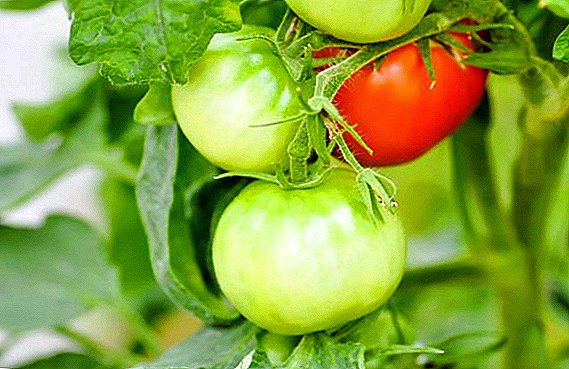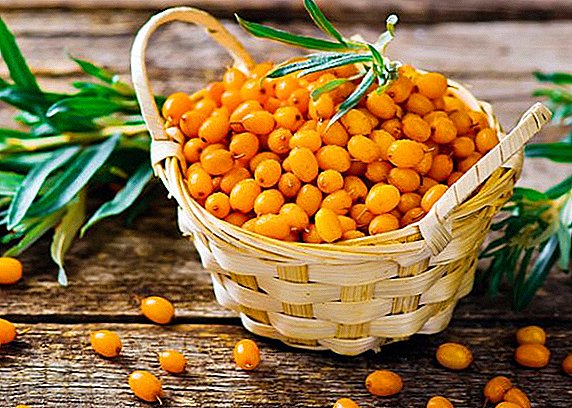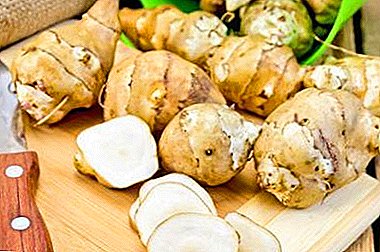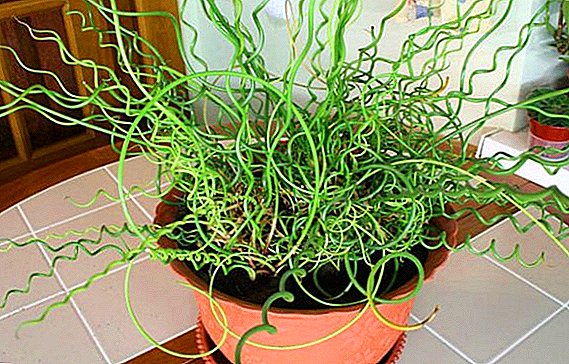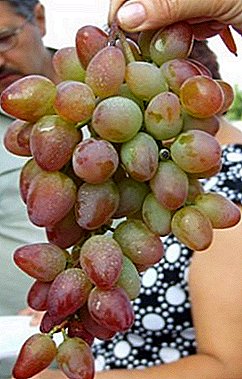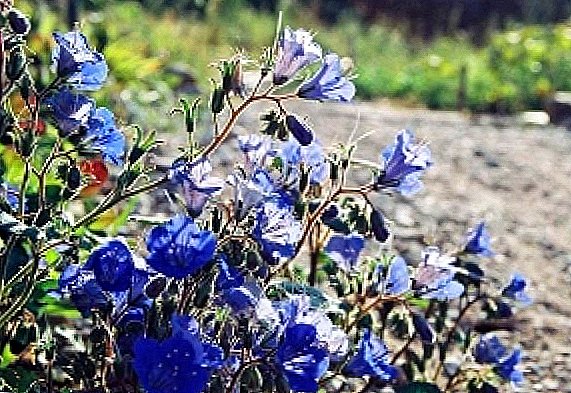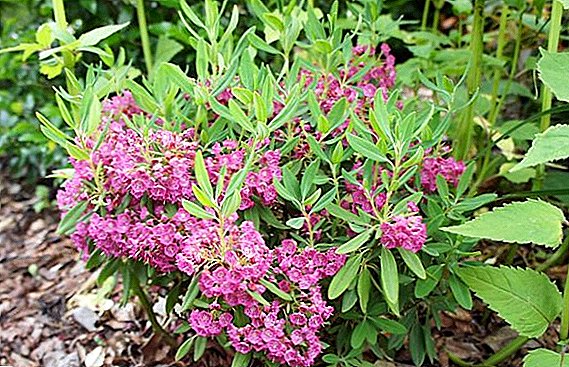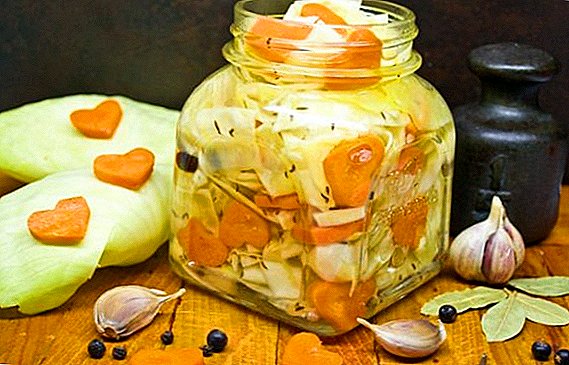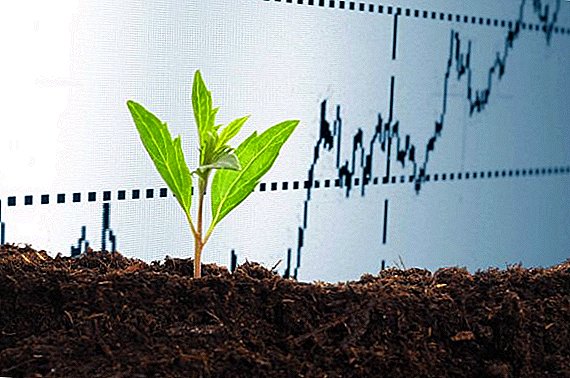 Potash fertilizers are a type of mineral fertilizers that are designed to fill the need of plants for potassium. As a rule, they are presented in the form of water-soluble salts, sometimes with the addition of other compounds containing potassium in such forms that allow the plant to consume it.
Potash fertilizers are a type of mineral fertilizers that are designed to fill the need of plants for potassium. As a rule, they are presented in the form of water-soluble salts, sometimes with the addition of other compounds containing potassium in such forms that allow the plant to consume it.
The value of potash fertilizers
The value of potash fertilizers is determined by the importance of potassium for mineral nutrition of plants. Along with phosphorus and nitrogen, this chemical element is a necessary component in the vital activity of plant organisms, while if the first two are represented as an integral part of organic compounds, then potassium is contained in cell sap and cytoplasm.
 Potassium stabilizes the metabolism in plant cells, normalizes the water balance, which allows flora representatives to better tolerate the lack of moisture, fully using the amount that is in the soil. If the plant dries quickly and fades during the dry season, this most likely indicates a lack of potassium in its cells.
Potassium stabilizes the metabolism in plant cells, normalizes the water balance, which allows flora representatives to better tolerate the lack of moisture, fully using the amount that is in the soil. If the plant dries quickly and fades during the dry season, this most likely indicates a lack of potassium in its cells.
Also, potassium activates the action of various enzymes, improves the process of photosynthesis, which is necessary for increasing the green mass, as well as other metabolic processes in plants, in particular, nitrogen and carbon metabolism.
Thus, fertilizing with nitrogen fertilizers of plants lacking potassium results in the formation of unprocessed ammonia in the tissues, with the result that the normal process of vital activity is disturbed.
A similar situation arises with carbon: the lack of potassium prevents the conversion of monosaccharides into polysaccharides. For this reason, potassium is an essential element for the normal accumulation of sugar in sugar beets, starch in potatoes, etc.
In addition, a large amount of sugar in the cells leads to the fact that the plant becomes more resistant to harsh winters. Aromatic substances in plants are also formed with the direct participation of potassium.
Potassium is also needed to reduce the susceptibility of plant organisms to diseases such as powdery mildew and rust, as well as a variety of rot. In addition, this element makes the plant stems more robust. 
Finally, potassium tends to slow down the too rapid growth and premature ripening of the fruits of plants, which is very important, since such fruits contain an excess of phosphoric acid.
Did you know? Of all the mineral impurities contained in the ashes, the most plants consume potassium. The champions in this part are cereals, followed by potatoes, beets and other vegetables. The leaves of root crops, sunflower and tobacco contain up to 6% of potassium, in cabbage, grain and root vegetables themselves - only about 0.5%.Most of the potassium consumed by the plant accumulates in its young shoots. In the roots (tubers) and seeds, as well as in older organs, the amount of potassium is minimal. If the plant lacks potassium, its amount is redistributed in favor of young organs that reuse the chemical element.
So, potassium helps the plant to better use the available moisture, accelerates metabolic processes, improves the development of the root system, improves the quality, color and aroma of fruits, increases their shelf life, makes the plant more resistant to frost, droughts and various diseases. 
In this case, all of the above, which gives plants potassium, is especially necessary during the growing season, as well as in the phase of fruit formation.
Thus, the value of potash fertilizers consists in the fact that they make it possible to provide the plant with an element absolutely necessary for its vital activity. However, in order for the effect of potash fertilizers to be truly effective, they should be used in combination with phosphorus and nitrogen fertilizers, because only in this case a properly balanced nutrition of the culture is ensured.
Properties of potash fertilizers
To enrich plants with potassium, potassium salts are used, which are originally contained in fossil ores. However, plants can consume this chemical element only in a solution of water, so all the numerous types of potash fertilizers have the ability to dissolve well in water. This property determines the very rapid onset of the reaction after applying such fertilizers to the soil.
Potassium fertilizers behave differently on different soils, which is caused by the peculiarity of their chemical properties and must necessarily be taken into account in agricultural engineering.
 For example, potassium chloride is recommended to be used where there is a lot of precipitation, and soils are acidic. On dry soils, as well as in greenhouses, it is preferable to use potassium sulfate.
For example, potassium chloride is recommended to be used where there is a lot of precipitation, and soils are acidic. On dry soils, as well as in greenhouses, it is preferable to use potassium sulfate.
Applying potash fertilizer in the fall is recommended for soils with a high clay content.
Such a soil does not let fertilizer badly, therefore, to improve the effect, it is better to bury it immediately closer to the roots.
Lighter soils suggest spring dressing with potash fertilizers. Serozem need little potassium, as they contain a sufficient amount of it.
The right timing for the application of potash fertilizers depends not only on the composition of the soil, but also on the type of fertilizer.
Thus, chlorine-containing potash supplements should be used in the fall, because at this time the earth contains a lot of moisture, and the substances that make up the fertilizer penetrate the soil faster. Chlorine, which is not very useful for plants, is better washed out of the soil during this period of the season, unlike potassium, which is retained in it.
 The application of chloride fertilizers in spring can badly affect plants that react negatively to this element, while, for example, potassium sulfate is a fertilizer that can be safely used at any time during the off-season.
The application of chloride fertilizers in spring can badly affect plants that react negatively to this element, while, for example, potassium sulfate is a fertilizer that can be safely used at any time during the off-season.
Important! Potassium fertilizers are better to be applied several times in small doses than once in high concentrations. In addition, you should know that potassium acts on the plant better if the fertilizer is applied to moist soil in cool weather.
Speaking about the properties of potash fertilizers, it is impossible not to dwell on such a moment as an overdose. Many gardeners, when they make potash fertilizers, ignore the recommendations of the manufacturer, mistakenly believing that there is not much useful substance.
In fact, potassium is vital for the normal functioning of the plant, but if it is too much, the benefits turn into harm.
Potassium oversupply leads to an imbalance of nutrition and, as a result, to the loss of plant immunity: it starts to ache, dry, shed leaves and wilt. Especially dangerous is the excessive amount of potassium due to the lack of nitrogen and phosphorus.
 Therefore, the choice of the type, time of application and the dose of potash fertilizer in relation to a particular type of plant should be carried out with special care and in strict accordance with the instructions for the preparation. In addition, it is important to remember that extremely healthy plants should be fed.
Therefore, the choice of the type, time of application and the dose of potash fertilizer in relation to a particular type of plant should be carried out with special care and in strict accordance with the instructions for the preparation. In addition, it is important to remember that extremely healthy plants should be fed.
Did you know? With spring fertilization in the composition of the mixture, the amount of potassium should exceed the amount of nitrogen, with autumn fertilization - vice versa. The amount of phosphorus in this case can not be adjusted.
What causes a lack of potassium
The lack of potassium in plant cells minimizes the beneficial properties that this element provides. The process of photosynthesis is sluggish, respectively, the plant does not increase the green mass. As a result, reproductive function deteriorates: buds are poorly formed, few fruits are formed, their sizes are much smaller than usual.
The plant itself is more likely to infect pests and fungal diseases, it suffers drought worse and freezes harder in winter. Seeds of such plants germinate poorly and often get sick.
The lack of potassium can be judged by some external signs, but they become visually distinguishable when the rate of an element in cells is lowered no less than three times. 
Did you know? Regional burn - the first sign of potassium starvation. The leaves (especially the lower ones, since, as was said, with a lack of potassium, the plant “pushes” it to the young shoots) become brown at the edges, as if the plant had been burned. Rust stains can be seen on the plate itself.
Potassium Demanding Cultures
Although potassium is necessary for all plants, the need for this element is different. More than others, potassium needs:
- vegetables include cabbage (especially cauliflower), cucumbers, rhubarb, carrots, potatoes, beans, eggplants, peppers, tomatoes, pumpkins, and other melons;
- from fruit crops - apple, pear, plum, cherry, raspberry, blackberry, grapes, citrus;
- of flowers — calla, hydrangea, anthurium, streptocarpus, browna, gerbera, spathiphyllum;
- from cereals - barley, buckwheat, flax.
The use of potash fertilizers for these types of crops has its own characteristics.
 Thus, most vegetable crops are poorly related to chlorine, therefore, it’s better to fill the potassium deficiency with potassium sulfate, as well as sodium fertilizers, This is especially true for root crops, since sodium tends to move the carbon to the roots from the leaves.
Thus, most vegetable crops are poorly related to chlorine, therefore, it’s better to fill the potassium deficiency with potassium sulfate, as well as sodium fertilizers, This is especially true for root crops, since sodium tends to move the carbon to the roots from the leaves.
Potash fertilizers for tomatoes It is recommended to be applied simultaneously with the sowing. These plants need potassium not so much in terms of growth as for the formation of fruits and their quality. It is the lack of potassium that explains the unripe green part of the tomato at its stem, sometimes reaching half the fruit or spreading over its area in uneven areas.
But the processing of tomatoes with fresh potash fertilizers can lead to increased development of green mass of the bush, which will adversely affect the abundance and quality of the crop. In general, an excess of phosphorus than potassium is more suitable for tomatoes to grow properly.
Lack of potassium for cucumbers leads to the deformation of the fruit (they become similar to pears), whips drawn out, the leaves change color to darker. Feed this culture can be potassium sulfate or wood ash. Potassium magnesia for cucumbers is recommended to be used as root top dressing during the flowering period (10 g per 10 l of water) in combination with superphosphate.
Grapes need to feed potash fertilizers annually, the best for this is the usual ash. It can be applied dry or diluted with water.
Types of potash fertilizers
As mentioned above, there are many varieties of potash fertilizers. It's time to learn more about them.
From the point of view of chemical composition, potash additives are divided into chloride and sulphate, according to the method of production - raw and concentrated.
Each type of fertilizer has its strengths and weaknesses, as well as features of use (culture, soil, period of application).
Potassium chloride
Potassium chloride - The most common potash fertilizer. It is a pink crystals, capable of strongly absorbing water and therefore caking with improper storage, which significantly impairs the subsequent solubility. 
The composition of potassium chloride is five times less chlorine than it is contained in sylvinite, from which the drug is produced.
Nevertheless, it should be understood that a fertilizer such as potassium chloride consists of approximately 40% chlorine, so this should not be used for chlorophobic crops. In particular, this applies to the vegetable group: tomatoes, cucumbers, potatoes, beans, as well as houseplants.
However, for example, celery and spinach perceive such feeding with great gratitude.
Like other chlorine-containing fertilizers, potassium chloride is introduced in the autumn, since in this case chlorine is washed out (evaporates) from the soil more quickly.
The main lack of fertilizer is the ability to accumulate salts in the soil and increase its acidity.
The specified properties of potassium chloride determine the features of its use in agriculture: fertilizer is applied long before planting, in no case preventing overdose. Heavy soils preclude the use of this type of potash fertilizer.
Potassium sulfate (potassium sulfate)
Potassium sulfate - small gray crystals, well soluble in water. Unlike potassium chloride, they do not absorb moisture and do not clot. 
Potassium sulphate in its composition, in addition to, in fact, potassium and sulfur, also contains magnesium and calcium, which makes it even more useful for plants.
As for sulfur, it prevents the accumulation of nitrates in plants and prolongs their safety. Due to this, potassium sulfate is good to fertilize vegetables.
Potassium sulfate is a fertilizer without chlorine, therefore it is especially convenient for filling up the deficiency of potassium in cultures negatively related to this element, and, moreover, can be used at any time and on almost any soil.
The exception is acidic soils, which potassium sulfate is contraindicated in the same way as potassium chloride, since both of these additives saturate the earth with acid.
Important! Potassium sulphate cannot be used in combination with lime mineral supplements.
Potassium salt
 Potassium, or potassium, salt It is a mixture of potassium chloride with finely milled sylvinite or Cainite. The amount of potassium in this supplement is 40%. The composition of chlorine potassium salt is between potassium chloride and sylvinite.
Potassium, or potassium, salt It is a mixture of potassium chloride with finely milled sylvinite or Cainite. The amount of potassium in this supplement is 40%. The composition of chlorine potassium salt is between potassium chloride and sylvinite.
It is clear that such a high chlorine content makes potash salts even less suitable for fertilizing plants sensitive to this harmful element than potassium chloride.
Like other chlorine-containing supplements, potash salts are introduced in the autumn period with deep embedding into the soil. In the spring, this fertilizer can be applied only if the land is saturated with moisture - this will allow chlorine to clean up, and potassium - to gain a foothold in the ground. In the summer, this fertilizer cannot be used.
Sodium contained in the potassium salt is well perceived. sugar beet and root crops fodder, besides, these plants are not chlorophobic. Fruit crops also respond favorably to correctly dosed application of potassium salts.
Important! Compared with potassium chloride, the dose of potassium salts should be increased by one and a half times. With other feedings, this fertilizer must be mixed immediately before application.
Potassium nitrate
Potassium nitrate contains nitrogen in its composition, which makes fertilizer a complex stimulator of growth and proper development of plants. Like potassium chloride, this fertilizer should be stored in a dry place, otherwise it hardens and becomes practically unsuitable for use. 
It is usually brought in spring, simultaneously with planting, but summer root dressings are entirely acceptable.
The effectiveness of potassium nitrate directly depends on the pH level in the soil: alkaline soil does not absorb potassium, the acidic soil does not absorb nitrogen. Accordingly, fertilizer should be used only on neutral soil.
Potassium carbonate (potassium carbonate)
Potassium carbonate, potassium carbonate, or potash - Another type of chlorine-free potash fertilizer.
Its main disadvantage is increased hygroscopicity, with the slightest moisture the substance quickly compressed, dampens and loses its properties. Because of this, potash is rarely used as a fertilizer.
 In order to slightly improve the physical characteristics of a substance, lime is sometimes added to its composition, however in this case potassium carbonate does not always acquire the necessary property to change the composition of the soil in the direction of the alkaline. Summer residents before using often mix potash with peat in equal parts, which also somewhat reduces the hygroscopicity of the fertilizer.
In order to slightly improve the physical characteristics of a substance, lime is sometimes added to its composition, however in this case potassium carbonate does not always acquire the necessary property to change the composition of the soil in the direction of the alkaline. Summer residents before using often mix potash with peat in equal parts, which also somewhat reduces the hygroscopicity of the fertilizer.
By the amount of the introduction of potassium carbonate does not differ from potassium chloride.
Among the advantages of fertilizer should be the possibility of using it on acidic soils.
Kalimagneziya (potassium magnesium sulphate)
 Kalimagneziya also does not contain chlorine and is excellent for fertilizing potatoes, tomatoes and other vegetables. In addition to these qualities, the product contains magnesium, due to which it is recommended for use on sandy and sandy sandy lands, especially those in need of potassium and magnesium.
Kalimagneziya also does not contain chlorine and is excellent for fertilizing potatoes, tomatoes and other vegetables. In addition to these qualities, the product contains magnesium, due to which it is recommended for use on sandy and sandy sandy lands, especially those in need of potassium and magnesium.
The advantage of fertilizer should also include its low hygroscopicity and good dispersibility.
Wood ash
A universal and widely available source of potassium for all types of crops is wood ash. It can also be applied to all soils, although with some reservations.
So, soils containing carbonates, as well as alkaline soils are not very well suited for fertilizing with wood ash. But it will perfectly complement the composition of the heavy and podzolic soil, lowering its acidity due to lime, which is part of the wood ash.
Did you know? In the ashes of deciduous trees, potassium is 2–3 times larger than in the ashes of conifers; in the ashes of old trees, the nutrients are much less than in young ones.
 Wood ash does not contain chlorine. It can be used as you like and whenever you want.
Wood ash does not contain chlorine. It can be used as you like and whenever you want.As an additive, the ash is mixed with the soil for seedlings. In a solution of ash, you can soak the seeds.Ash can be poured under plants in a dry form or diluted with water for irrigation.
Important! Do not mix ash with manure, bird droppings, nitrogen fertilizers and superphosphate.Potash fertilizers are an absolutely necessary additive for agricultural crops. However, an overabundance of potassium, as well as improper use of potassium-containing fertilizers, can do no less damage to the garden and the garden than the lack of this element.
Particular care should be taken with those types of potash fertilizers that contain chlorine, since many plants perceive its presence in the soil very poorly.


